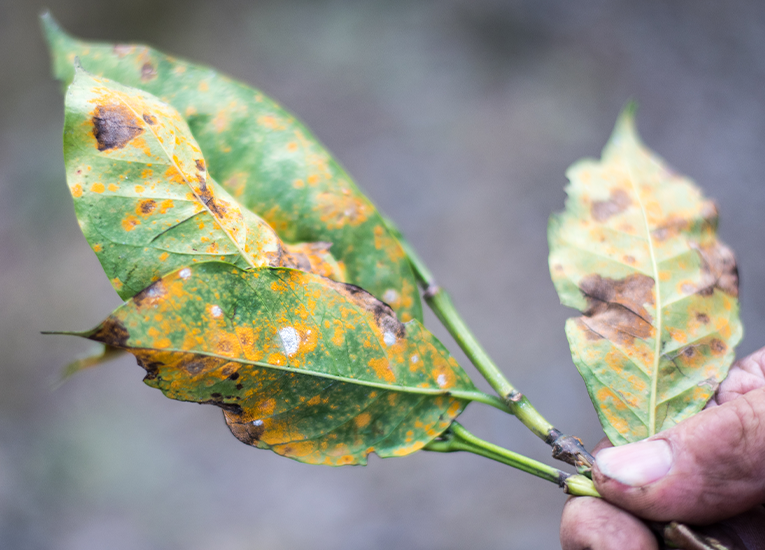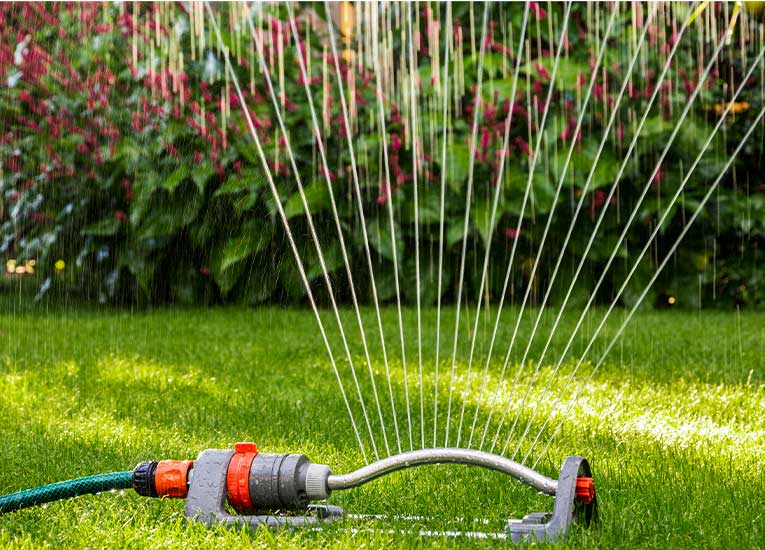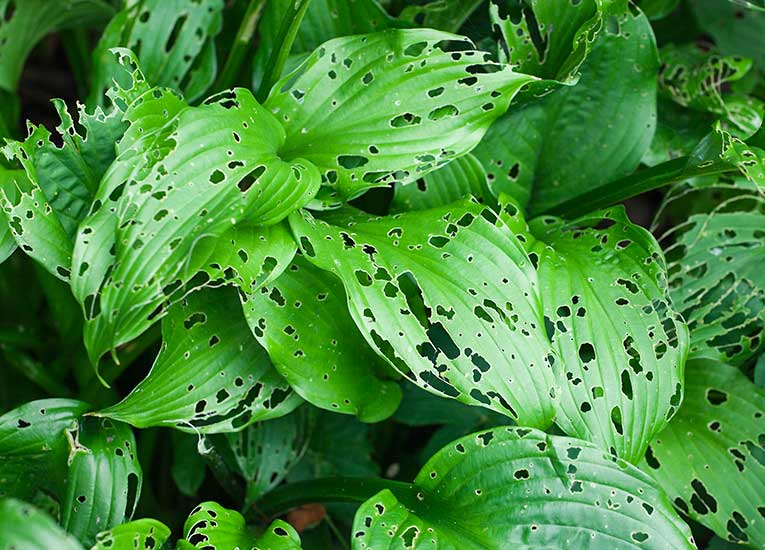There’s nothing worse than looking out at your shrubs, lawn and flowers and seeing what was once green and lush has become brown and sickly. While lawns and other plants can support insects feeding upon them without any indication of distress for a time, when growing slows, damage can become quite obvious. The best way to get ahead of insect damage is to learn a little bit about the usual suspects and the steps needed to keep those pests at bay.
White grubs
White grubs are the larvae of a variety of different scarab beetles. Once they’re fully grown, they won’t bother your lawn too much, but in their C-shaped wormy form, they feed on turfgrass roots. If you notice patches of your lawn turning brown that are easy to pull up, you may have white grubs. Check for them with this easy trick: pour a bucket of hot, soapy water over the affected area and wait 10 minutes. If you see white grubs coming to the surface for air, we recommend treating with IKE’s Total Grub Control. Apply in spring and late summer/fall for season-long control and best results.
Chinch bugs
These tiny pests are so small that they can be hard to spot, but the damage they can do to your lawn can be devastating. They feed on grass by boring into the blade and sucking the sap inside. The toxic saliva they leave behind causes the grass to die. Signs of chinch bugs are yellow patches of grass that turn brown and die rather than come back to life when watered. You can test for chinch bugs by taking a metal can and removing the top and the bottom. Then, drive the can a few inches into the soil and add water. If you have chinch bugs, they should float to the top. Chinch bugs are best treated with a broad spectrum insecticide like IKE’s Total Pest Control.
Ants
There’s a saying that ants aren’t bad for your lawn until they are. What that means is a certain number of ants can actually benefit a lawn, as their tunnels provide aeration and the organic matter they leave behind promotes soil health. However, when ant populations become too large for the lawn, their tunnels can dry out the soil. When this happens, you’ll see unsightly mounds on the lawn’s surface that smother grass and prevent it from growing. While there are some easy homemade concoctions made from soap, vinegar and boiling water that can be effective in dealing with ants, these remedies can create damaged areas on your lawn. To address ants, we recommend IKE’s Total Pest Control. Apply it from April through September for up to six months of protection.
Rose slugs
Rose slugs aren’t actually slugs. They are the larvae of sawflies that feed on the underside of rose leaves. In the early stages of their life, they make tiny holes that look like brown spots on the leaves. As they grow, their size increases – as does their appetite. They begin to look like green caterpillars, and they can literally strip your rose plants bare. The trick in killing rose slugs is to use a product that can be sprayed on the plant without killing it. We recommend IKE’s Total Tree & Shrub Protection Plus. It provides systemic and foliar control of insects and pests on roses, flowers and landscape ornamentals.
Aphids
These tiny sap-sucking insects usually appear in groups on the underside of leaves of distressed plants. In large colonies, they can weaken plants, harming fruit and flowers. They multiply quickly, so it’s good to be proactive with them before reproduction starts. IKE’s Total Tree & Shrub Protection Plus is recommended for control of almost all aphids.
Cutworms and Armyworms
Cutworms are big, fleshy caterpillars that love to feed on lawns. They’re particularly crafty, as they cut off leaves at the crown and drag them into a burrow to feed. Adult cutworm moths lay their eggs at night, and they are attracted to light. Because of this, cutworm invasions are particularly common around well-lit homes.
Armyworms get their name because they congregate in large groups and move while taking down everything in their path. Like cutworms, the adult moths lay loads of eggs at night, so it’s important to get on top of them sooner rather than later. Both cutworms and armyworms can be treated with IKE’s Total Pest Control. For optimum protection, delay mowing or watering for 24 hours after application.
IKE’s: Your lawn insect management expert
Of course, there are many more insects that can wreak havoc on your lawn and shrubs, but these are some of the most common. If you’d like help identifying a culprit or want recommendations regarding the best method to defend against a known perpetrator, drop us a line.
You can find a comprehensive list of common lawn pests and how to deal with them through this resource from North Carolina State University.



